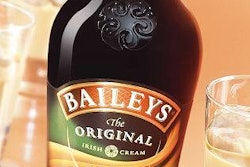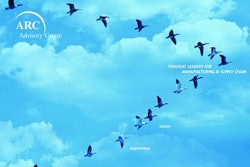Many different packaging approaches are emerging for popular-priced, highly drinkable wines. Last year, two of the more engaging were from Snob Hill Winery and from Three Loose Screws, a unit of Don Sebastiani & Sons.
Snob Hill definitely takes a marketing approach. Parent company Access Beverage is located in Irvine, CA, far from Sonoma, where winemaker Bob Broman crafts the wines and bottles them at Taft Street Winery. While Broman handles grape buying, blending, and packaging, all the packaging decisions are made in Irvine, under the direction of Diane Svehlak and her marketing team.
“Basically, the whole branding and launch of Le Snoot was done in-house,” says Svehlak, president of Access Beverage. “We did all the label graphics, from concept to finished art. The actual illustrations were done by a famous illustrator, so we bought the rights to them, along with the name ‘Le Snoot’ and ‘Snob Hill Winery.’ And never would I divulge the illustrator’s name.” Even the wine names are playful, like 2002 Le Snoot Cheeky Chardonnay.
The synthetic cork
What also sets the Snob Hill approach apart from others is the use of a black synthetic cork from Neocork.
“Before we began our national launch earlier this year, we discovered that our distributors preferred the use of a synthetic cork closure,” Svehlak tells Packaging World. “They prefer it because of numerous requests they get from mass retailers and also from on-premise accounts. It’s proven to be a very acceptable closure because it prevents cork from drying out. And with conventional cork, you have to sacrifice a certain percentage of bottles to cork taint. So it was really our distributors—and the marketplace—that drove us to use the synthetic cork.”
The 43-mm-long Neocork, says sales representative Craig Finetti, is made of low-density polyethylene that’s coextruded with a foam core and an outside layer in a critical thickness. “It has to be more pliable and more resilient for the wide array of corker jaws in the wineries,” he says. “It has a very smooth finish to give it a very good seal, whether on hand corkers or automatic equipment.”
The Neocork, Finetti says, is not recommended for wines that expect long-term, in-bottle aging. “We recommend that our closures be used for wines that will be consumed within two to five years after bottling,” he says. “Today, we sort of joke that most wines are ‘truck-aged’-aged only as long as it takes to get them to market. But it’s true in many cases. Most new-world white wines are meant to be drunk very young.”
These pigs do fly!
While Broman and Access Beverage chief executive officer Jim Moeller create the wines, Svehlak and her marketing people exercise the same care in the wines’ presentation. She personally supervised the label printing at Collotype, says Andrew Mullineux, a sales representative.
“The look they wanted was a combination of gloss and matte finishes,” Mullineux says. “They wanted a high-gloss finish where the pigs are printed, and a matte finish everywhere else, so the pigs would really pop out.” Collotype prints the labels rotary offset in four-color process, plus black. “Then we added a screened gloss varnish. We have to apply it with a screen so the gloss can be carefully positioned only where the pigs are printed,” he adds.
This careful approach has already won many customers. The company introduced the new brand at a wine and spirits show in Las Vegas this past summer. “The response was phenomenal,” says spokeswoman Nancy Marriott. “The people there couldn’t believe the label graphics. And when we uncorked the wines, they were just as impressed by the product. We’ve been listening to what consumers want. This is a highly commercial line of wines that are designed like boutique wines.”
The company’s goal for the Las Vegas shows was to gain distribution in 15 states for 2004, Marriott recalls. “We ended up practically going national,” bubbles Svehlak. Early customers include Kroger, Piggly Wiggly (naturally), Harris Teeter, and Meijer. The 750-mL bottles will retail for $10.99.
Another irreverent approach
Third- and fourth-generation wine merchants Don Sebastiani & Sons, Sonoma, CA, also use Neocork closures for its “family” wines. Early in 2004, the company decided to open a new division, Three Loose Screws, for the production of wines from Napa that are serious, but in packaging that doesn’t take itself seriously. The wines retail for $9.99 to $12.
There is a whole story about the origin of the concept behind the adoption of roll-on, pilfer-proof (ROPP) screw caps for these wines. But knowing how much fun the company has with packaging, I take it with a glass of cabernet. Don Sebastiani and his sons, Donny and August, are the representation for the “winery’s” name, and Screw Kappa Napa is an obvious reference to the screw cap.
The proprietors turned to longtime label designer Michael Hollyfield of Production Art for the brand’s graphics. “As a designer, the name ‘Screw Kappa Napa’ initially scared me,” Hollyfield admits. “Don brought the name to me with the idea of making it look like a fraternity.
“While I was doing some research, I came across a book that showed the famous fresco, Three Graces, and it seemed to click. So I decided to take the impulsive name and make it look like graffiti, like it had been scratched into the fresco. I had another illustrator create the fresco, and add wine and grapes in a whimsical way, to update it.”
Screw cap is notable
The design, Hollyfield says, helps the screw cap become an ally of the wine. And, adds Greg Creamer, winery plant manager, “We’ve known for decades that a screw cap was the best closure for wine, but it was difficult to break tradition.”
For this line, Sebastiani uses a closure from Global Cap of Italy with a Saranex liner. A whole section of the Three Loose Screws Web site explains why it’s an improvement over cork for consistency, convenience, and resealability.
Hollyfield’s label design was converted by Paragon Label, which prints the labels by flexo in four process colors. Back labels are printed in a single color. “I felt fortunate to be involved in a playful, risk-taking exercise that wasn’t bound by tradition,” Hollyfield says. “It was more like: ‘Let’s have fun with the fact that it’s in a screw cap.’”



























